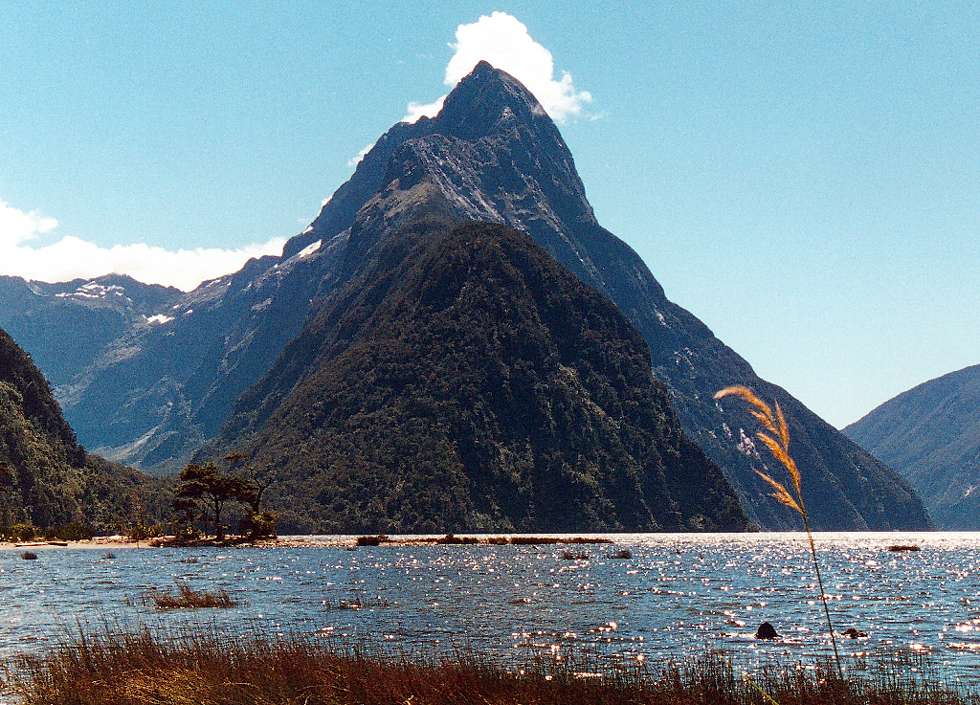Milford Sound
|
Mitre Peak is on the south side of the fjord and there's no easy way to get to it, though I'm sure you could hire a kayak and get there that way. On the north side of the fjord, and very near the village, is Bowen Falls, visible on the right-hand side of this photo as it cascades down into Harrison Cove. |
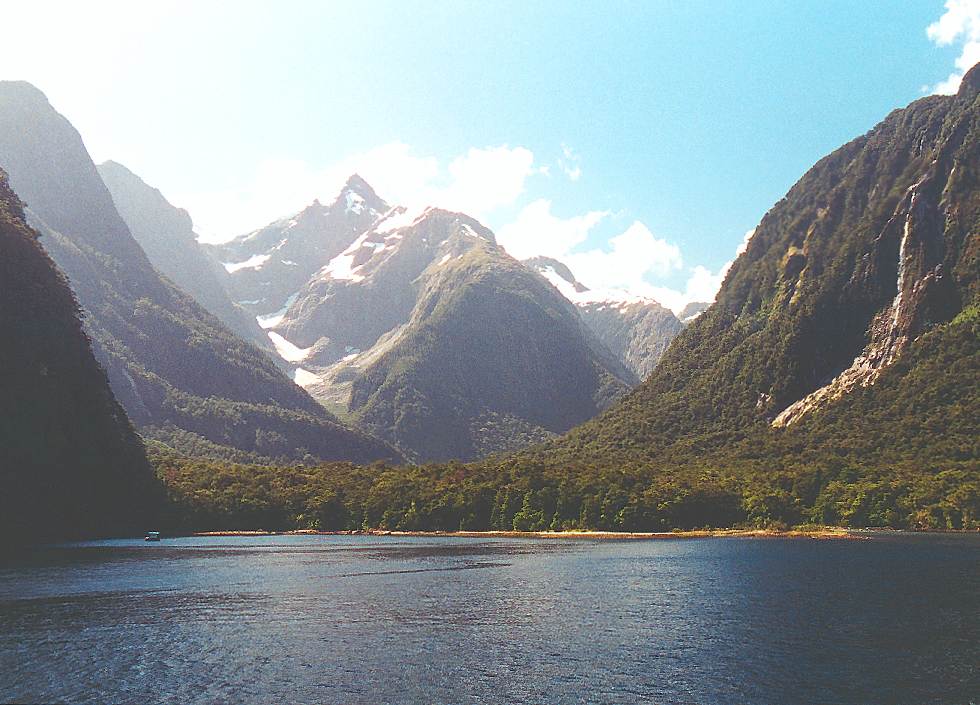 |
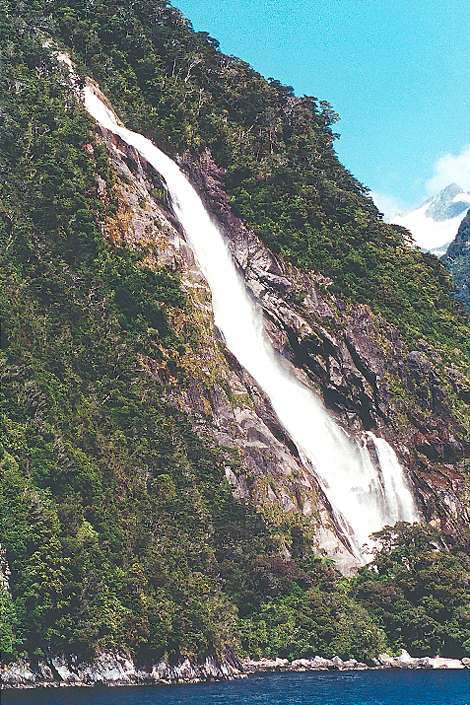 |
It's an easy walk to the falls, and if you want you can stand near the base getting soaked to the skin. It doesn't look like much in the previous photo, but everything in Milford Sound is on a large scale - Bowen Falls is 160 meters (526 feet) high. |
|
To my way of thinking it's too asymmetric to be one of the world's prettiest waterfalls, but it's still impressive when you're standing up close. |
 |
|
These two mountains are called The Elephant and The Lion because they're supposed to resemble these two animals facing each other. On the far side, the Elephant's trunk bends down from the head to the bottom of the valley between them, and the Lion's hindquarters are on the right-hand side of the photo, rising up to his shoulders and head. If you look closely at the lowest point of the Elephant's trunk, you can see Stirling Falls - at 146 meters (505 feet) high it's dwarfed by the Elephant at 1517 meters and the Lion at 1302 meters. |
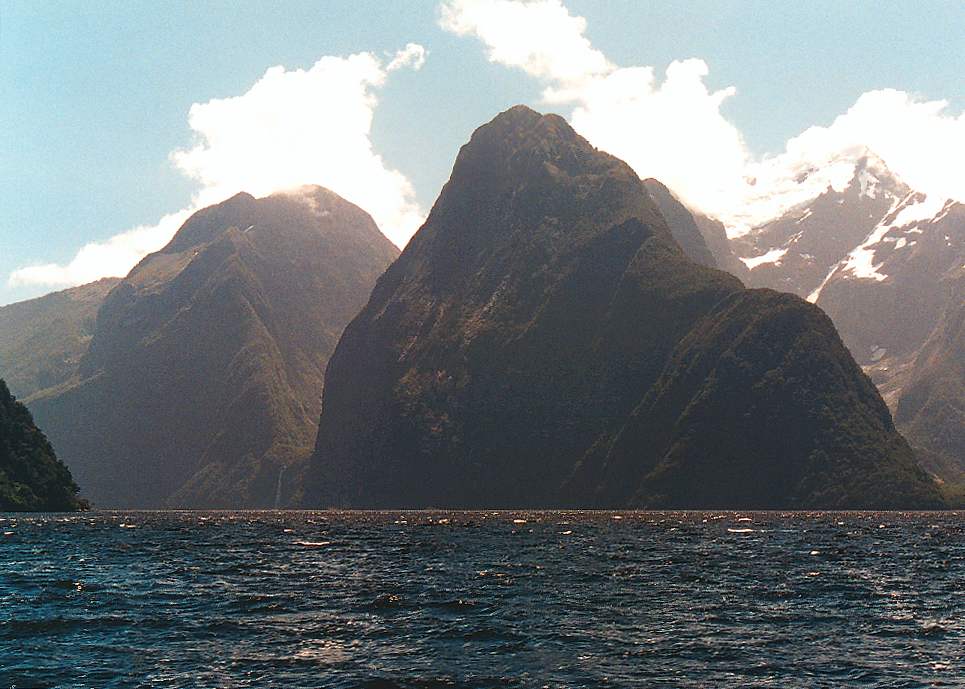 |
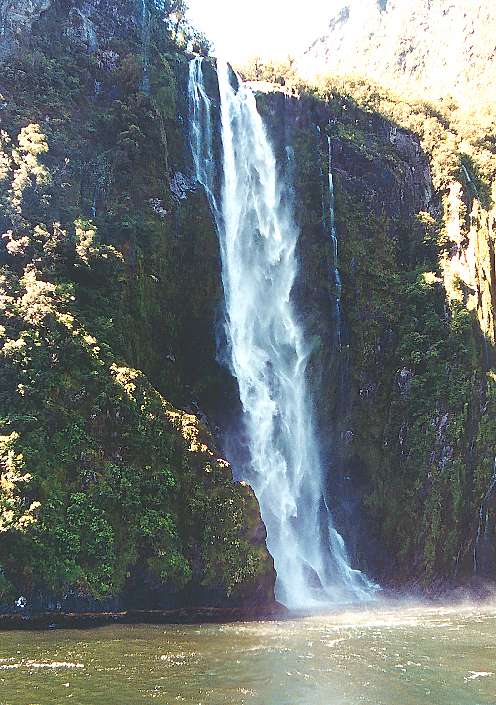 |
And here's Stirling Falls close up! Milford Sound and the other flooded valleys in Fiordland were all created by glaciers moving through the region, resulting in characteristic landforms which you can see in this and previous photos on this page. The most characteristic feature is U-shaped valleys, caused by the glaciers knocking off all the sharp edges. You can clearly see these U-shaped valleys in the photos of Mitre Peak, Harrison Cove and The Elephant and the Lion. Next, glaciers produce hanging valleys when one glacier meets another, larger, glacier. The smaller glacier's valley abruptly meets the larger glacier's valley, producing a steep drop like the one Stirling Falls goes over. |
|
Looking back towards the east, you can just make out Milford Sound village at sea level on the left, at the base of the Sheerdown Range of mountains, whose highest peak is 1871 meters (6139 feet). This range gets its name from the steepness of its slopes, something shared with most of the mountains surrounding the fjord. |
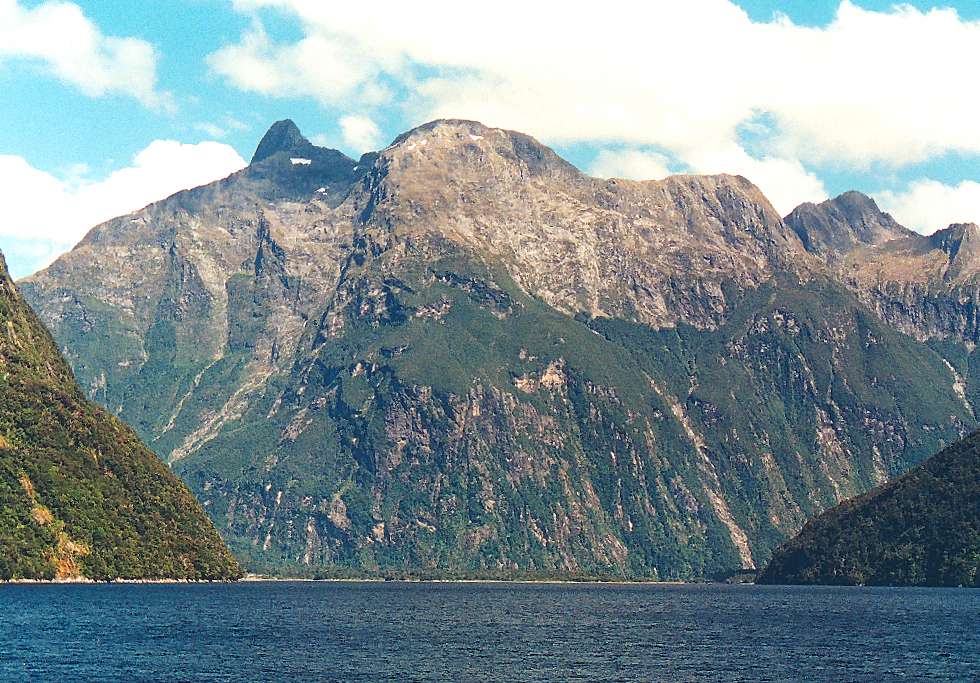 |
|
This pair of Australian tourists simply couldn't believe the ship's captain when he repeatedly announced that he was about to bring the bow of the ship under Fairy Falls. This feat is possible because most of the mountains continue straight down another 1000 feet to the floor of Milford Sound. Like most of the people standing on the bow, I beat a hasty retreat inside the cabin, but these guys doggedly stood there while they got thoroughly drenched. The moral is, always believe everything that a New Zealander tells you, especially if you're Australian! |
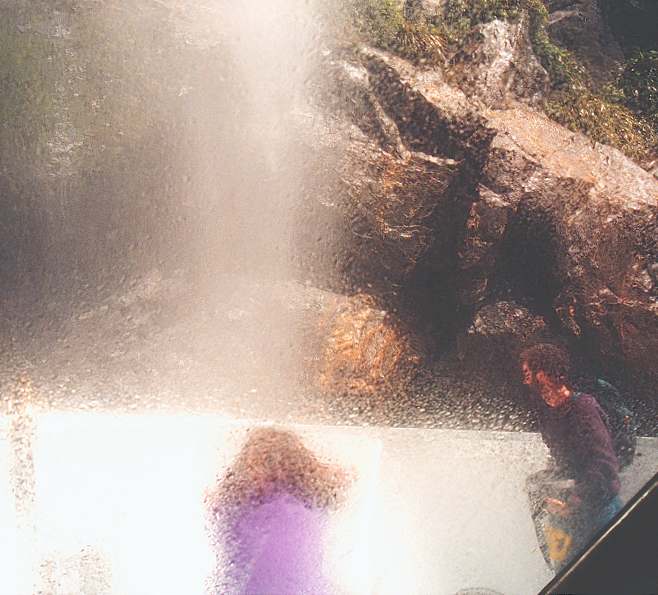 |
|
Milford Sound is also home to a permanent colony of New Zealand fur seals. It's a mystery to me how they managed to get up this steep rock - perhaps they flew - but they're obviously enjoying themselves! Another surprising aspect of the fjord's wildlife is the presence of red corals and black corals on the flooded walls. It's just past 45 degrees south of the equator from here, so the water is quite cold, and these corals normally live in deep water. However, the huge volume of fresh water flowing into the fjord from the surrounding forests produces a 10 or 20 meter thick layer of fresh water on top of the salt water. The fresh water is stained dark brown from the tannin in the leaves, which cuts down the light levels in the salt water below, allowing the coral to grow at shallower depths. Since I visited, an underwater observatory has been built to allow visitors to see the coral and some of the other marine life. |
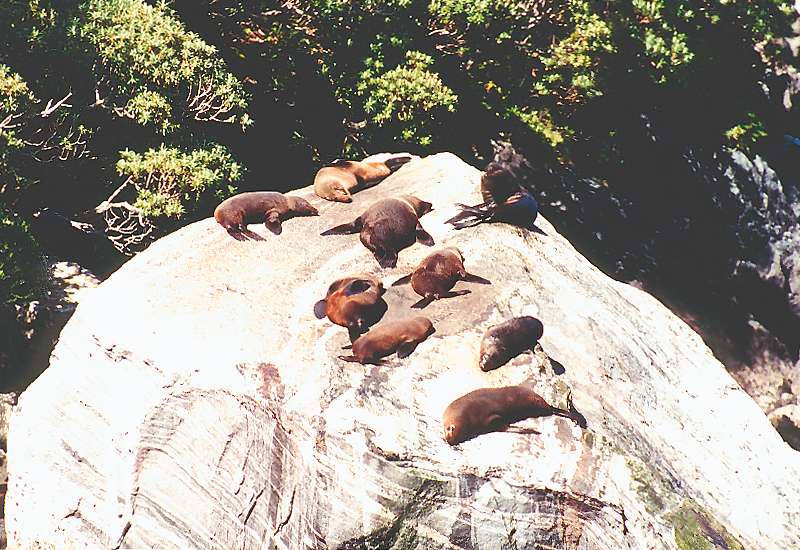 |
|
Who said that seals don't have personalities - just look at all the different ways they're lying down here! I particularly like the one lying curled up like a dog! |
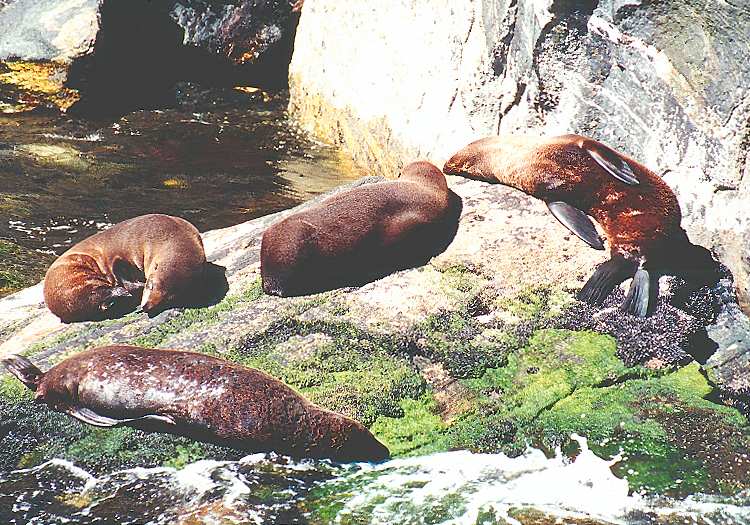 |
|
Out on the open ocean, this is the entrance to Milford Sound, which is relatively shallow at just 27 meters deep. It's so well hidden that early explorers didn't even realize that a 22 kilometer long fjord was here. |
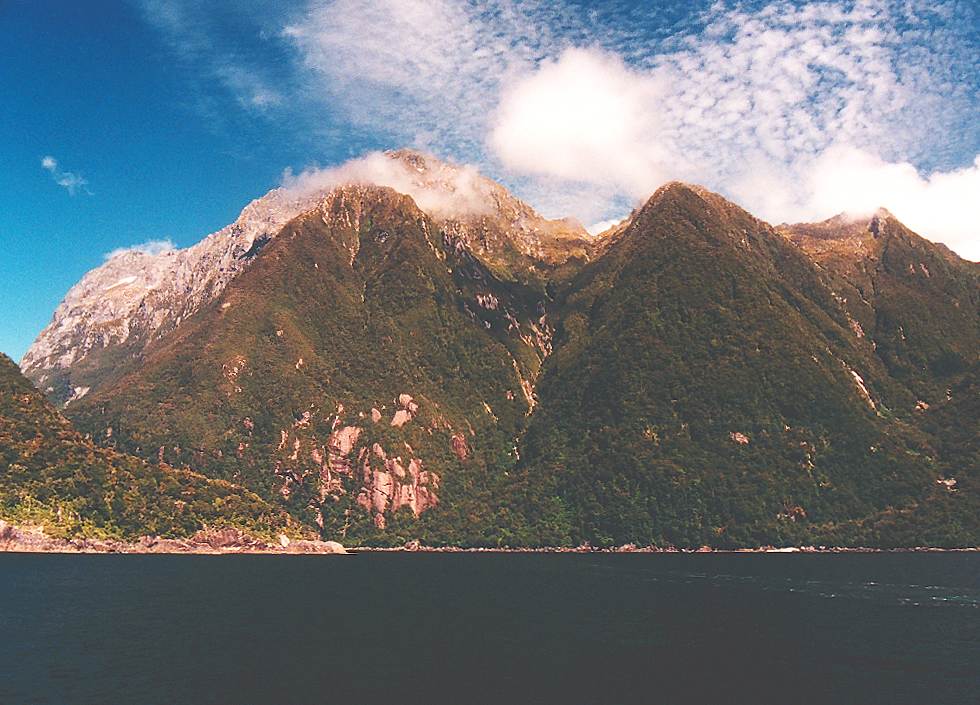 |
